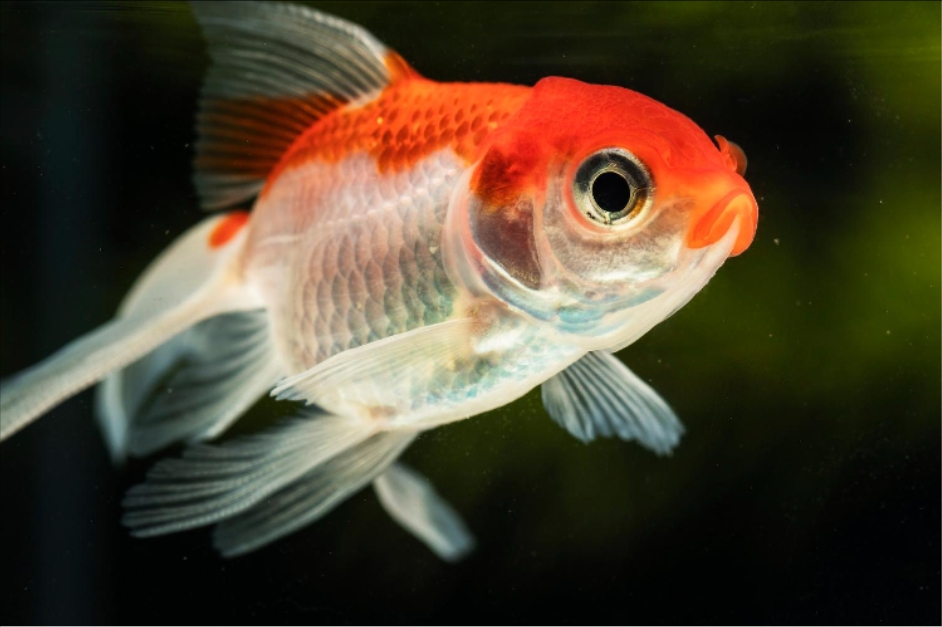Welcome to the enchanting world of bubble eye fish! If you’re a fan of unique and mesmerizing aquatic creatures, then you’re in for a treat. Bubble eye fish, also known as water bubble fish, are a captivating species that will leave you awe-struck with their distinctive appearance. These delightful fish are renowned for their large, fluid-filled sacs that dangle beneath their eyes, giving them a truly otherworldly appearance.
In this article, we will dive deep into the world of bubble eye fish, exploring their unique characteristics, history, care requirements, feeding habits, health issues, breeding secrets, and their popularity in the aquarium hobby. So fasten your seatbelts and get ready for a bubbletastic underwater adventure!
The Unique Characteristics of Bubble Eye Fish
One of the most striking features of bubble eye fish is their large, fluid-filled sacs that develop beneath their eyes. These sacs, known as eye bubbles, are delicate and require gentle handling to prevent injury. The bubbles enhance the fish’s appearance, making them look like they’re carrying tiny water balloons. It’s important to note that the bubbles are filled with fluid and not air, so they do not serve as a means of respiration for the fish. In fact, bubble eye fish have a normal pair of functioning gills, just like any other fish.
Another notable characteristic of bubble eye fish is their graceful swimming style. Due to the presence of the eye bubbles, these fish have reduced vision and are unable to see clearly in front of them. As a result, they tend to swim slowly and cautiously, relying on their other senses to navigate their surroundings. It’s fascinating to observe how they gracefully maneuver through the water, their bubbles gently swaying with each movement.
The History and Origins of Bubble Eye Fish
The origins of bubble eye fish can be traced back to ancient China, where they were selectively bred for their unique appearance. These captivating fish were first documented in the 18th century, and their popularity quickly spread across the globe. The precise origin of bubble eye fish is uncertain, but it is believed that they were developed through crossbreeding various goldfish varieties.
Bubble eye fish are the result of a genetic mutation that causes the fluid-filled sacs to develop beneath their eyes. This mutation is recessive, meaning that both parents must carry the gene for the eye bubbles to be present in their offspring. Breeders carefully select and pair fish with the desired traits to perpetuate the bubble eye lineage. Over time, bubble eye fish have become one of the most sought-after and beloved varieties in the world of goldfish keeping.
Caring for Bubble Eye Fish – Tank Setup and Maintenance
Proper care is essential to ensure the health and well-being of your bubble eye fish. When it comes to tank setup, it’s important to provide them with an environment that mimics their natural habitat while taking into consideration their unique needs. A spacious aquarium is ideal, as bubble eye fish appreciate room to swim and explore. A minimum tank size of 20 gallons is recommended to accommodate a pair of bubble eye fish comfortably.
Since bubble eye fish have delicate eye bubbles, it’s crucial to provide them with a safe and debris-free environment. Avoid sharp decorations, protruding rocks, or any objects that may cause injury to their bubbles. Opt for smooth gravel or sand substrate to prevent any accidental punctures. Additionally, ensure that the filtration system is gentle to avoid strong water currents that could harm their bubbles.
Maintaining water quality is of utmost importance in keeping bubble eye fish healthy. Regular water changes, filtration maintenance, and monitoring the water parameters are necessary to prevent the buildup of ammonia, nitrites, and nitrates. Test the water regularly using a reliable water testing kit and make adjustments as needed to maintain optimal conditions. A well-maintained and clean environment will greatly contribute to the overall health and happiness of your bubble eye fish.
Feeding Bubble Eye Fish – The Right Diet for Bubbletastic Growth
Feeding bubble eye fish a nutritious and balanced diet is essential to support their growth and well-being. These beautiful creatures are omnivorous by nature, meaning they eat a combination of both plant-based and animal-based foods. It’s important to provide them with a varied diet that meets their nutritional requirements.
A high-quality commercial fish food specifically formulated for goldfish is a great staple diet for bubble eye fish. Look for a food that contains a good balance of proteins, carbohydrates, vitamins, and minerals. Pellets or flakes that are easily consumed by bubble eye fish are ideal. Be mindful of the size of the food particles, as they should be small enough to fit comfortably into their mouths.
In addition to commercial fish food, supplement your bubble eye fish diet with fresh vegetables and fruits. Leafy greens like lettuce, spinach, and kale are excellent choices. You can also offer them small pieces of blanched peas, cucumber, or zucchini. These veggies provide essential nutrients and fiber to aid in digestion.
It’s essential to feed your bubble eye fish in small quantities multiple times a day rather than one large feeding. This helps prevent overfeeding and reduces the risk of digestive issues. Observing your fish while they eat will give you a better idea of their feeding habits and ensure that they’re consuming the appropriate amount of food.
Common Health Issues in Bubble Eye Fish and How to Prevent Them
Bubble eye fish are generally hardy and resilient, but they are prone to certain health issues that require attention and proactive care. One of the most common problems experienced by bubble eye fish is eye injury or infection. Due to the delicate nature of their bubbles, they are susceptible to damage from sharp objects, rough handling, or poor water conditions. To prevent eye injuries, ensure that the tank environment is free from sharp objects, and handle your fish with extreme care.
Proper water quality is crucial for the overall health of your bubble eye fish. High levels of ammonia and nitrites can lead to a weakened immune system, making them more susceptible to diseases. Regular water changes and maintenance of the filtration system are essential in preventing water quality-related issues. Additionally, monitoring the water parameters and adjusting them as needed will help keep your fish healthy and thriving.
Another common health issue in bubble eye fish is swim bladder disorder. This disorder affects the fish’s ability to control their buoyancy, causing them to float uncontrollably or sink to the bottom of the tank. Swim bladder disorder can be caused by overfeeding, poor diet, or genetic factors. To prevent this condition, ensure that you’re feeding your fish a balanced diet in appropriate quantities. Avoid overfeeding and provide them with a varied diet that meets their nutritional needs.
Breeding Bubble Eye Fish – The Secrets to Successful Reproduction
Breeding bubble eye fish can be a rewarding and exciting experience for experienced aquarists. However, it requires careful planning, patience, and a deep understanding of the breeding process. Before attempting to breed bubble eye fish, it’s important to ensure that you have a suitable breeding pair.
To successfully breed bubble eye fish, begin by conditioning the male and female fish separately. This involves providing them with a high-quality diet rich in proteins and ensuring optimal tank conditions. Conditioning can take several weeks, during which you should closely monitor the health and behavior of your fish.
Once the fish are adequately conditioned, introduce the male to the female’s tank. Observe their behavior closely, as the male will begin to chase the female and display courtship behaviors such as flaring his fins and nudging her gently. If the female is receptive, she will respond by displaying her own courtship behaviors, indicating that she is ready to spawn.
During the breeding process, it’s important to provide a suitable spawning site for the female to deposit her eggs. A separate breeding tank with fine-leaved plants or a spawning mop can be used for this purpose. Once the female has laid her eggs, carefully remove the adults from the breeding tank to prevent them from consuming the eggs.
It usually takes a few days for the eggs to hatch, and the fry will require specialized care and feeding. Infusoria, freshly hatched brine shrimp, or commercially available fry food can be provided to ensure their growth and survival. With proper care and patience, you’ll witness the magical transformation of the tiny fry into beautiful bubble eye fish.
The Popularity of Bubble Eye Fish in the Aquarium Hobby
Bubble eye fish have captivated the hearts of aquarium enthusiasts all around the world. Their unique appearance and graceful swimming style make them a popular choice for both beginner and experienced aquarists. These delightful fish add a touch of magic and whimsy to any aquarium, making them an excellent centerpiece fish.
The popularity of bubble eye fish is evident in the numerous aquarium competitions and shows dedicated to goldfish. These events showcase the beauty and diversity of bubble eye fish, with participants vying for the title of the most stunning and well-cared-for fish. The dedication and passion of bubble eye fish enthusiasts have contributed to the continued growth and appreciation of these captivating creatures in the aquarium hobby.
Bubble Eye Fish in Art and Culture
The enchanting beauty of bubble eye fish has transcended the world of aquarium keeping and made its way into art and culture. These captivating creatures have inspired artists, writers, and even fashion designers. Paintings and sculptures featuring bubble eye fish can be found in art galleries and exhibitions, showcasing their unique appearance and graceful presence.
Bubble eye fish have also made appearances in various forms of popular culture. They have been featured in movies, animations, and even video games, further increasing their popularity and recognition. These delightful fish have become symbols of beauty, elegance, and tranquility, captivating the imagination of people from all walks of life.
Conclusion – The Enchanting World of Bubble Eye Fish
As we conclude our bubbletastic underwater adventure, we hope you’ve gained a deeper appreciation for the fascinating world of bubble eye fish. These captivating creatures with their fluid-filled sacs and graceful swimming style are truly a sight to behold. Whether you’re a seasoned aquarist or a beginner, bubble eye fish make a wonderful addition to any aquarium. Their unique characteristics, historical significance, care requirements, feeding habits, breeding secrets, and popularity in the aquarium hobby have made them a beloved species among aquatic enthusiasts worldwide.
So why not embark on your own bubbletastic underwater adventure and bring the mesmerizing world of bubble eye fish into your home?
Visit Goldfish Tank to learn more about caring for bubble eye fish and explore the fascinating world of goldfish keeping. Happy fishkeeping and may your underwater journey be filled with wonder and enchantment!



